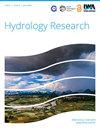下一代生态系统实验北极降雨模拟器:了解北极降雨模式变化影响的工具
IF 2.4
4区 环境科学与生态学
Q2 WATER RESOURCES
引用次数: 0
摘要
预计北极地区的降雨频率和强度将增加,对永久冻土可能产生不利影响,导致融化加速,碳释放到大气中。然而,关于离散降雨事件对北极和亚北极永久冻土影响的研究很少。在永久冻土带景观中进行控制降雨实验可以更好地了解降雨事件的强度、持续时间和时间变化对永久冻土带生态系统的影响。在这里,我们描述了下一代生态系统实验北极降雨模拟器(NARS)的设计和实现,这是一个可变强度(4-82 mm/h)的降雨模拟器,可用于研究降雨对永久冻土稳定性的影响。NARS设计包括一个3d打印的4厘米h水槽,并使用经过校准的eTape电阻率传感器(R2 = 0.9-0.96)来测量系统的放电。NARS的设计是轻量级的,构造简单,可以很容易地部署在远程位置。作为更新的降雨模拟器设计和现代化控制的现场验证,NARS在苏厄德半岛进行了测试。由于其便携性、部署、尺寸和降雨强度的通用性,NARS代表了研究降雨对永久冻土环境影响的方法创新。本文章由计算机程序翻译,如有差异,请以英文原文为准。
The Next-Generation Ecosystem Experiment Arctic Rainfall Simulator: a tool to understand the effects of changing rainfall patterns in the Arctic
Rainfall frequency and intensity are expected to increase in the Arctic, with potential detrimental impacts on permafrost, leading to enhanced thawing and carbon release to the atmosphere. However, there have been very few studies on the effect of discrete rain events on permafrost in the Arctic and sub-Arctic. Conducting controlled rainfall experiments within permafrost landscapes can provide an improved understanding of the effect of changing intensity, duration, and timing of rain events on permafrost tundra ecosystems. Here, we describe the design and implementation of the Next-Generation Ecosystem Experiment Arctic Rainfall Simulator (NARS), a variable intensity (4–82 mm/h) rainfall simulator that can be used to study the effects of rainfall on permafrost stability. The NARS design includes a 3D-printed 4 cm H-flume and uses an eTape resistivity sensor that was calibrated (R2 = 0.9–0.96) to measure discharge from the system. NARS is designed to be lightweight, simple to construct, and can be easily deployed in remote locations. As a field validation of updated rainfall simulator design and modernized controls, NARS was tested on the Seward Peninsula, AK. Because of its portability, versatility in deployment, dimensions, and rainfall intensity, NARS represents a methodological innovation for researching the impacts of rainfall on permafrost environments.
求助全文
通过发布文献求助,成功后即可免费获取论文全文。
去求助
来源期刊

Hydrology Research
WATER RESOURCES-
CiteScore
5.00
自引率
7.40%
发文量
0
审稿时长
3.8 months
期刊介绍:
Hydrology Research provides international coverage on all aspects of hydrology in its widest sense, and welcomes the submission of papers from across the subject. While emphasis is placed on studies of the hydrological cycle, the Journal also covers the physics and chemistry of water. Hydrology Research is intended to be a link between basic hydrological research and the practical application of scientific results within the broad field of water management.
 求助内容:
求助内容: 应助结果提醒方式:
应助结果提醒方式:


